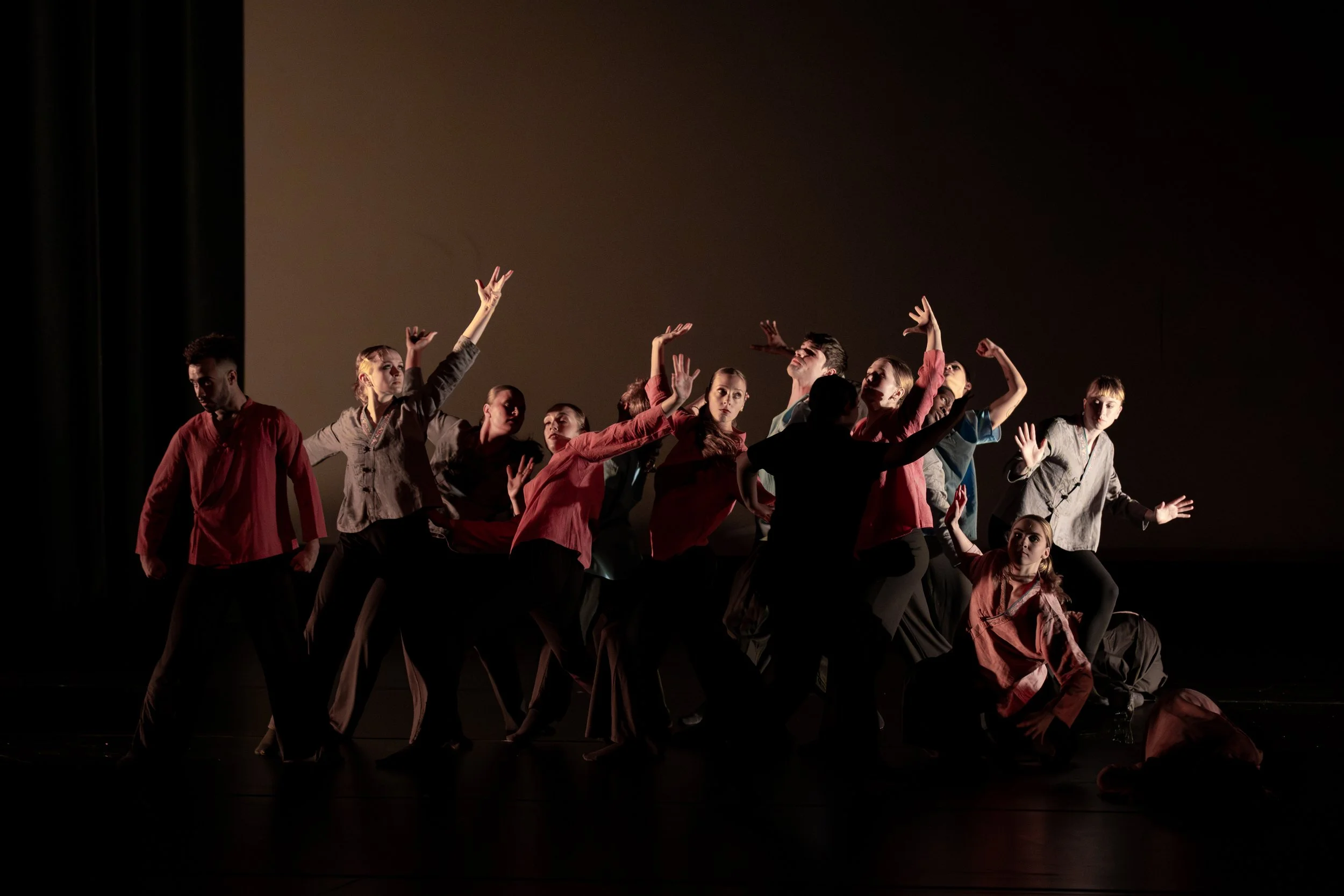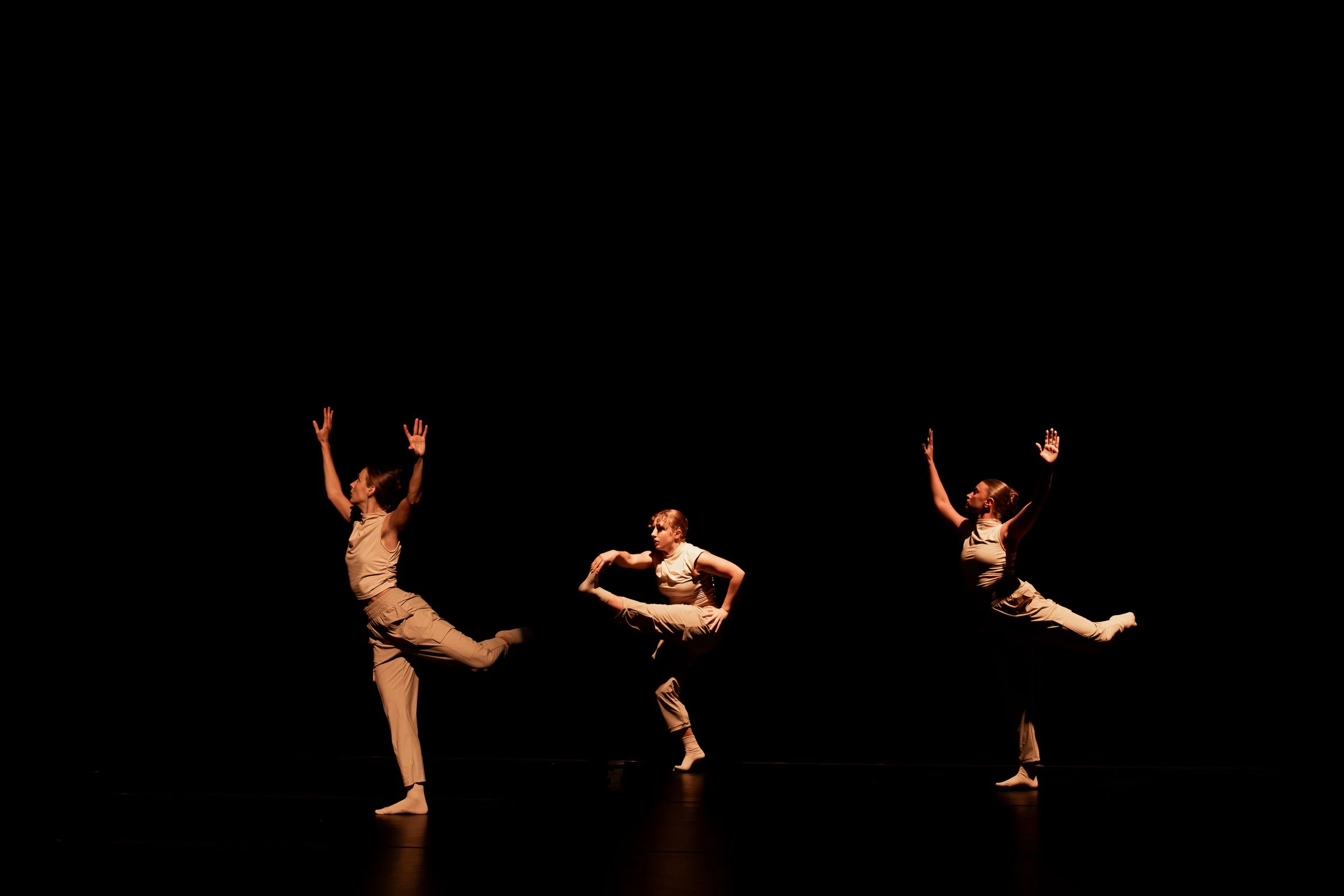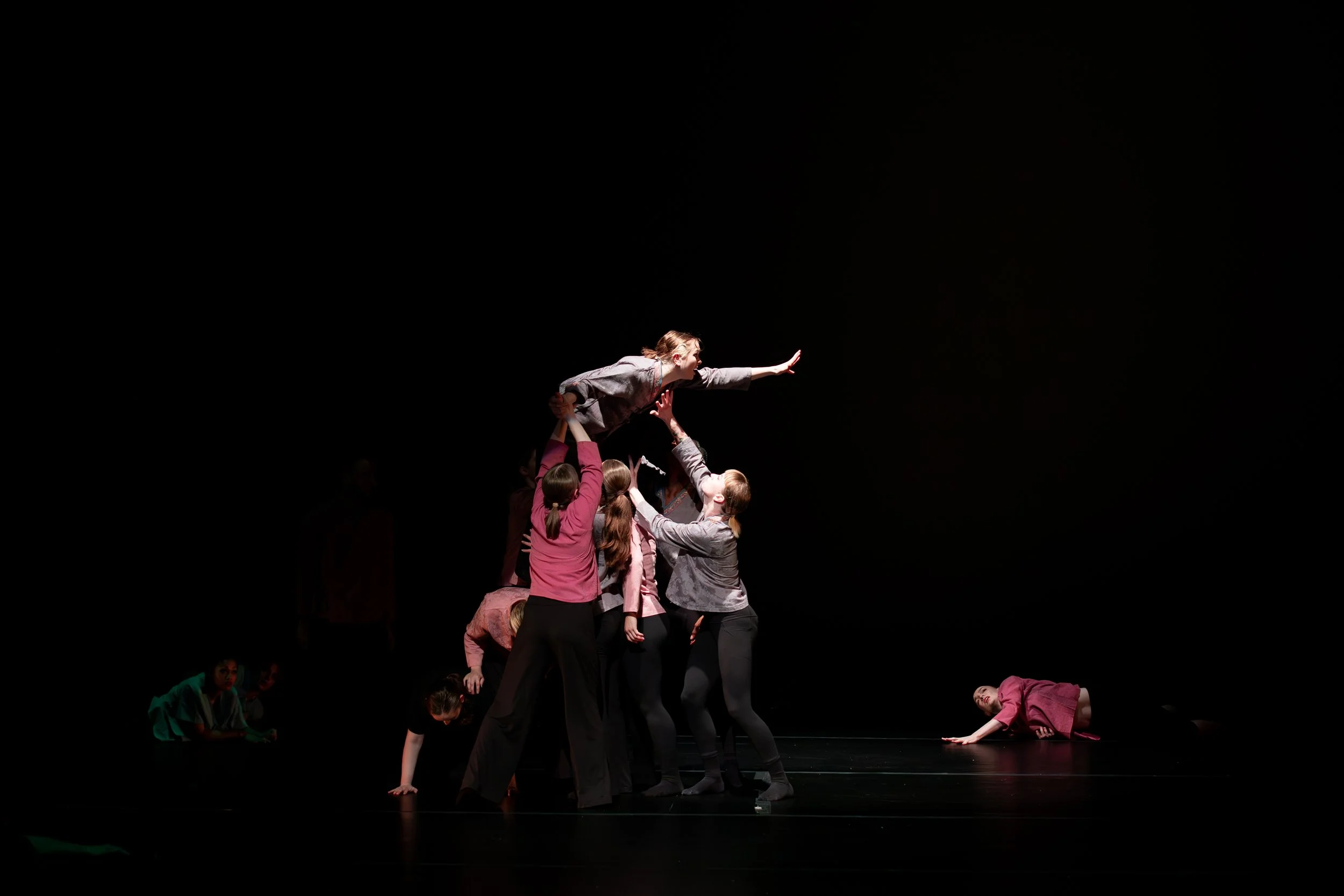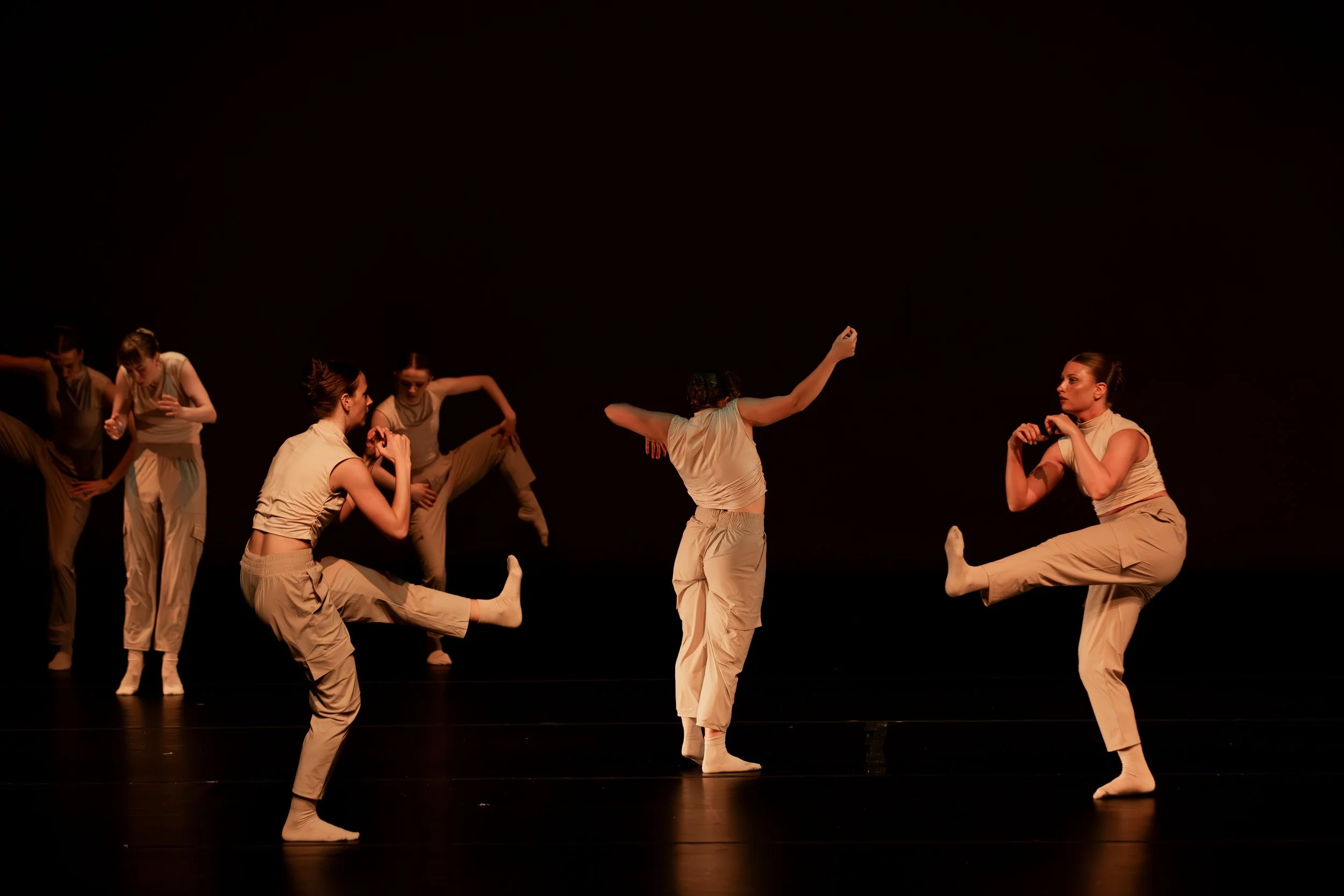HQ Review: STLDT’s Trainees present their (Em)Power Spring Concert
Spearheaded by STLDT’s Director of Education Brandon Fink, Saint Louis Dance Theatre’s Spring Trainee Concert was performed at Nerinx Hall in collaboration with the Nerinx Hall High School Dance Department. The evening’s performance consisted of seven pieces by six different choreographers. Though each piece offered unique insight into this particular group of dancers, the standout works of the evening were Murmuration by Brandon Fink, Meld by Jorrell Lawyer-Jefferson, and IAN/IVE by Hui Cha Poos and the dancers.
Murmuration opened the evening and was presented as the culmination of a months-long collaboration between Saint Louis Dance Theatre and the Dance Department of Nerinx Hall High School. The curtain opened to eight dancers in blue dresses on their knees. Waves of circular movement rippled through the dancers as they leaned and reached from their position on the floor. Gentle, swelling classical music rang out as dancers turned and rolled to the ground to eventually find their feet. These young dancers impressed with their commitment to the piece and in their connection with one another on stage. There were strong partnering moments which dotted this ensemble piece, in which the group made and disappeared formations in various lines of symmetry across the stage. The piece felt special as a gracious showcase of a group of students learning to take up their own space and discovering all they are capable of as performers.
In Meld, Lawyer-Jefferson creates a world—an environment into which the dancers and audience members entered together. One dancer moved in the dark and in complete silence; as the stage was illuminated, two other performers were revealed to be in stillness, watching the dancer. One by one, all three came alive in movement. Their bodies grew and expanded, deflated and collapsed to the sound of a dissonant horn track. Not exactly in unison, but in a kind of connected breath, the dancers moved around the stage methodically, taking their time. The music choice provided plenty of empty, quiet spaces, and the dancers were often brought into a suspended stillness, creating dynamic tension in the performance. The dancers seemed to churn through thick atmosphere; dressed in earth tones and under minimal stage lighting, the tone brought to mind desolate desert landscapes. The music crescendoed to an almost unbearable shrill note as the bodies onstage, now plentiful, continued to fold and unfold. Meld gave these dancers an opportunity to play with the in-between spaces: in the music but also between their own movements and in the space between one another. It is a special treat to see dancers take their time, to engage with the space around them and with their own inner rhythms of breath; the effect of which is a meditative focus which draws the viewer in. As the music intensified, the tone shifted, and performers increased in agility and intensity before the restrained movements of stillness and methodical folding and unfurling bodies reprised. By the end of the piece, the air on stage seemed more alive and nearly palpable. Meld offered a refreshing point of view and demonstrated a poignant commitment to presence.
At the opening of IAN/IVE by Hui Cha Poos, lights came up to reveal dancers spread around the stage, doubled over with eyes on the floor. As they unfolded their bodies to stand, their hands remained as clenched fists while three dancers strode onto stage and moved briskly between the rows of bodies. With military-esque movement of arms, the dancers’ steady, pounding feet kept time to the metronome-steady, pulsing music score. Their movements were laborious and earthbound, and there was a sense of a mass, a crowd – eschewing perfectly organized lines of dancers in favor of a mob of people swelling and contracting on stage. Music changed to light guitar and folk voices with a swinging sensibility. Dancers snaked through each other with liquid spines and shuffling feet and as the piece built, so did the intensity; with bodies colliding, flipping over, reaching through, and moving together in low swinging motions. The piece ended with dancers spread around the stage in pairs, demonstrating a moment of tenderness which stood in contrast to the rest of the piece’s more combative tone. The duets ended with an embrace, which slowly disintegrated as couples peeled apart to leave the stage in a slow, staggered order. This piece showcased the range and depth of a dynamic group of performers who approached each work of the evening with both confidence and nuance. The program as a whole served as a testament to their virtuosity, presence, and emerging artistry.
Photos by Carly Vanderheyden








